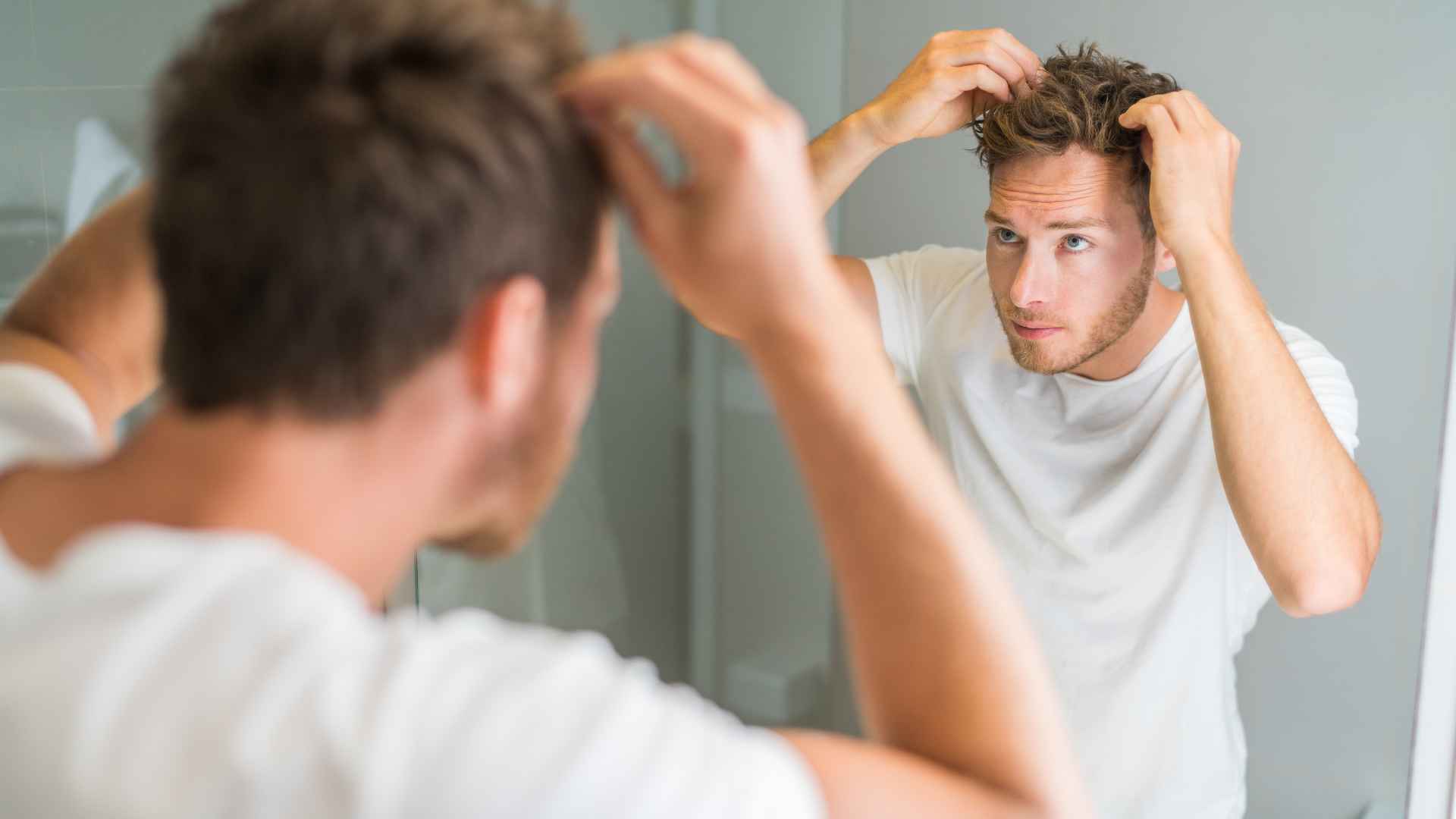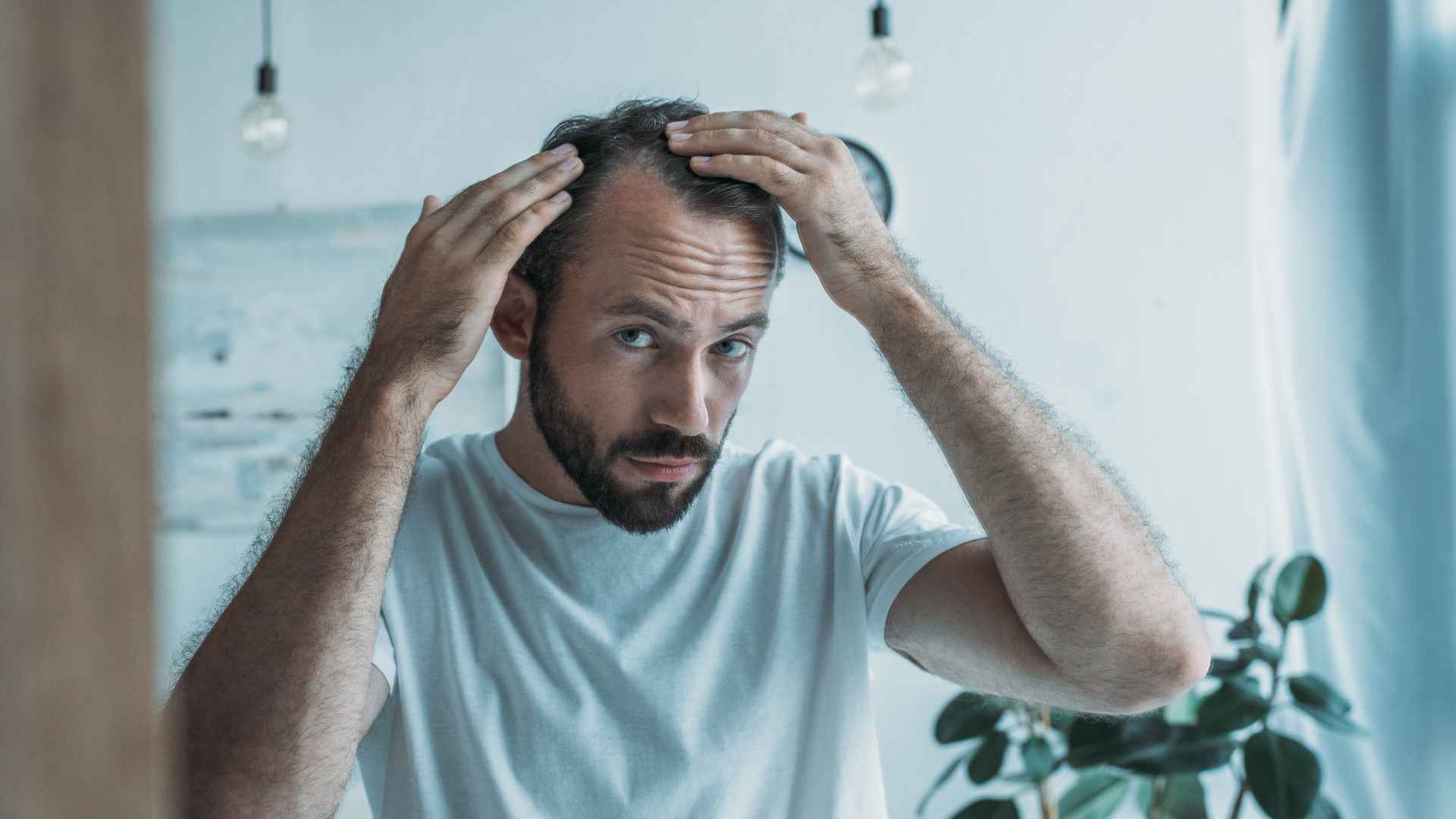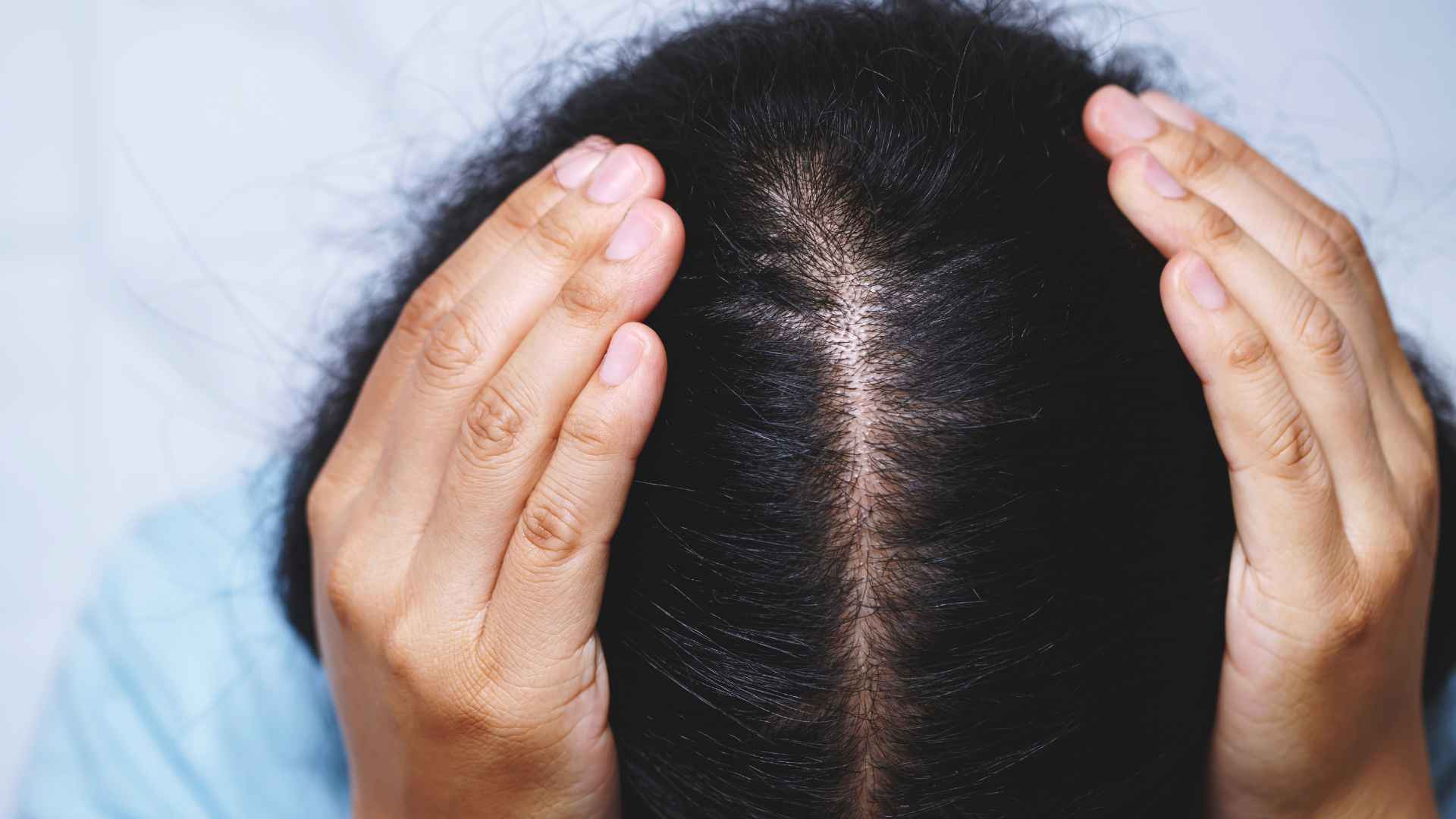Are you worried about the onset of hair loss? Many people share this concern and wonder when they might start experiencing hair loss. In this article, we will delve into the topic and shed light on the typical timelines and factors that can contribute to the start of hair loss.
Understanding these factors can help provide clarity and peace of mind. So, let’s explore the fascinating world of hair loss and gain a better understanding of what to expect.
Understanding Hair Growth Cycle

Hair growth follows a cyclical pattern known as the hair growth cycle. This cycle consists of three distinct phases:
- Anagen Phase (Growth Phase): This is the active growth phase of the hair follicles. During anagen, the hair cells in the follicles divide rapidly, resulting in hair growth. The duration of the anagen phase varies from person to person but typically lasts between 2 to 7 years. Individuals with longer anagen phases tend to have longer hair.
- Catagen Phase (Transition Phase): The catagen phase is a short transitional phase that marks the end of the active growth phase. During this phase, the hair follicle shrinks, and hair growth ceases. The catagen phase lasts for about 2 to 3 weeks.
- Telogen Phase (Resting Phase): In the telogen phase, the hair follicle remains dormant and no longer produces new hair. The old hair is in a resting state and is eventually shed to make way for new hair growth. The duration of the telogen phase is around 3 to 4 months.
After the telogen phase, the hair follicle re-enters the anagen phase, and the cycle begins anew. It’s important to note that not all hair follicles are synchronized in their growth cycles. This means that at any given time, some follicles may be in the anagen phase, while others may be in the telogen phase. This ensures a continuous cycle of hair growth and shedding throughout a person’s life.
Understanding the hair growth cycle helps explain why hair loss is a normal part of the cycle. It’s normal to shed around 50 to 100 hairs per day as part of the natural hair renewal process. However, various factors can disrupt the hair growth cycle and contribute to abnormal or excessive hair loss. These factors can include genetics, hormonal imbalances, certain medical conditions, nutritional deficiencies, stress, and lifestyle choices.
By understanding the hair growth cycle and the factors that influence it, we can gain a better perspective on the onset and progression of hair loss. It’s important to remember that hair loss is a complex issue with various underlying causes. If you have concerns about your hair loss or its onset, consulting with a healthcare professional or a dermatologist can provide personalized advice and guidance based on your specific situation.
Normal Hair Shedding
Hair shedding is a normal and natural part of the hair growth cycle. On an average day, it is typical to shed anywhere from 50 to 100 hairs. This shedding is a result of the natural cycle in which older hairs are shed to make way for new hair growth. However, it’s important to note that normal shedding does not lead to noticeable thinning or bald patches.
Each hair follicle goes through its own growth cycle, which includes the anagen (growth) phase, catagen (transition) phase, and telogen (resting) phase. During the telogen phase, the old hair is released and falls out, making room for new hair to grow. This shedding process is part of the natural renewal process and is not cause for concern.
It’s important to distinguish normal hair shedding from excessive hair shedding or hair loss. Excessive hair shedding refers to a significantly higher amount of hair falling out, often resulting in noticeable thinning or bald patches. Excessive shedding can be a sign of an underlying issue, such as a hormonal imbalance, nutritional deficiency, or certain medical conditions. If you are experiencing excessive shedding or concerns about hair loss, it is advisable to consult with a healthcare professional or a dermatologist for proper evaluation and guidance.
Remember, normal hair shedding is a natural occurrence and should not cause alarm. If you are unsure whether your hair shedding is within the normal range or if you have concerns about noticeable thinning or bald patches, seeking professional advice can provide reassurance and help determine if further evaluation or treatment is needed.
Factors Affecting Hair Loss Onset
There are several factors that can contribute to the onset of hair loss. Let’s discuss some of the most common ones:
- Genetic Factors: The most common cause of hair loss is androgenetic alopecia, also known as pattern hair loss. It is influenced by genetic predisposition and tends to run in families. This type of hair loss is characterized by a gradual thinning of the hair, typically starting at the temples or crown of the head.
- Hormonal Factors: Hormonal changes can also play a role in hair loss. For example, during puberty, hormonal fluctuations can cause temporary hair shedding. Similarly, pregnancy and childbirth can trigger hair loss, known as postpartum hair loss. Hormonal changes during menopause can also lead to hair thinning. These hormonal shifts can disrupt the hair growth cycle and result in temporary hair loss.
- Medical Conditions and Treatments: Certain medical conditions and treatments can contribute to hair loss. Thyroid disorders, such as hypothyroidism or hyperthyroidism, can disrupt the balance of hormones and lead to hair thinning. Autoimmune diseases like alopecia areata can cause patchy hair loss. Additionally, treatments such as chemotherapy for cancer can result in significant hair loss.
- Nutritional Deficiencies: Inadequate nutrition, specifically deficiencies in vitamins and minerals essential for hair health, can contribute to hair loss. Nutrients like iron, zinc, biotin, and vitamin D play crucial roles in maintaining healthy hair growth. Deficiencies in these nutrients can lead to weakened hair follicles and subsequent hair loss.
- Lifestyle Factors: Certain lifestyle choices can impact hair health and contribute to hair loss. Factors like excessive heat styling, tight hairstyles, and improper hair care practices can cause damage to the hair shaft and lead to breakage and hair loss. Additionally, chronic stress, smoking, and poor overall health can also have an impact on hair health.
It’s important to note that the onset and progression of hair loss can vary among individuals based on these factors and other individual circumstances. If you are concerned about hair loss or experiencing noticeable thinning, it is advisable to consult with a healthcare professional or a dermatologist. They can evaluate your specific situation, identify any underlying causes, and provide personalized guidance and treatment options to address your concerns.
Age and Hair Loss

Age is a significant factor when it comes to hair loss. It is common for hair thinning and hair loss to become more prevalent as individuals age. Many people notice changes in their hair density and thickness in their 40s, 50s, or even later.
Age-related hair loss is often attributed to a combination of genetic and hormonal factors. As individuals age, the hair follicles may become more sensitive to hormones, specifically dihydrotestosterone (DHT), which is derived from testosterone. DHT can shrink the hair follicles, leading to shorter and thinner hair growth. This process, known as miniaturization, is a common characteristic of androgenetic alopecia, the most common form of hair loss.
Genetic factors also play a significant role in age-related hair loss. If individuals have a genetic predisposition to androgenetic alopecia, the likelihood of experiencing hair thinning and hair loss as they age increases. This hereditary condition affects both men and women and can result in a progressive reduction in hair volume over time.
It’s important to note that age-related hair loss is a natural and gradual process for most individuals. However, if you are experiencing sudden or excessive hair loss at any age, it may be indicative of an underlying issue and should be evaluated by a healthcare professional or a dermatologist.
While age-related hair loss may not be completely preventable, there are measures individuals can take to manage and slow down the progression of hair loss. This can include adopting a healthy lifestyle, avoiding harsh hair treatments, practicing good hair care habits, and considering medical interventions such as medications or hair transplant procedures, depending on the individual’s specific situation.
If you have concerns about age-related hair loss, consulting with a healthcare professional or a dermatologist can provide valuable insights, personalized advice, and appropriate treatment options to address your specific needs.
Male and Female Pattern Hair Loss
Male pattern baldness and female pattern hair loss are the two most common types of hair loss. Let’s explore their typical timelines for onset:
Male Pattern Baldness (Androgenetic Alopecia):
Male pattern baldness is characterized by a receding hairline and thinning hair on the crown of the head. It is typically caused by a combination of genetic and hormonal factors, specifically the influence of dihydrotestosterone (DHT) on hair follicles.
In terms of onset, male pattern baldness can start as early as the late teens or early 20s. However, it is more common for noticeable hair loss to begin in the 30s or 40s. The progression of male pattern baldness varies among individuals. Some may experience a gradual thinning of the hair over many years, while others may have a more rapid progression.
Female Pattern Hair Loss:
Female pattern hair loss is characterized by a diffuse thinning of hair over the top of the scalp. Unlike male pattern baldness, which typically follows a distinct pattern, female pattern hair loss tends to be more diffuse and spread out.
The onset of female pattern hair loss is usually in the 40s or later, but it can vary among individuals. Some women may notice subtle changes in hair density and thickness in their 30s, while others may experience more noticeable thinning in their 50s or later. Female pattern hair loss is also influenced by genetic and hormonal factors, including the impact of hormonal changes during menopause.
It’s important to note that these timelines are general guidelines, and individual experiences may vary. Hair loss can occur earlier or later depending on various factors, including genetics, hormonal fluctuations, and overall health. If you have concerns about hair loss or notice significant changes in your hair, consulting with a healthcare professional or a dermatologist can provide personalized guidance and appropriate treatment options based on your specific situation.
Other Factors Influencing Hair Loss Onset
In addition to genetic and hormonal factors, there are several other factors that can influence the onset of hair loss. Let’s explore some of these factors:
- Stress: High levels of stress, both physical and emotional, can contribute to hair loss. Stress can disrupt the normal hair growth cycle and push hair follicles into the resting phase (telogen) prematurely. This can lead to increased shedding and potentially contribute to hair loss.
- Nutritional Deficiencies: Poor nutrition and certain nutritional deficiencies can impact hair health and contribute to hair loss. Inadequate intake of essential vitamins and minerals, such as iron, zinc, biotin, and vitamin D, can weaken the hair follicles and affect their ability to produce healthy hair. Ensuring a balanced diet and addressing any nutrient deficiencies can support overall hair health.
- Hairstyles and Haircare Practices: Certain hairstyles that exert tension on the hair, such as tight ponytails, braids, or cornrows, can lead to a type of hair loss called traction alopecia. Prolonged tension on the hair can cause damage to the hair follicles, leading to hair loss in the affected areas. Additionally, excessive heat styling, frequent use of chemical treatments, and improper haircare practices can contribute to hair damage and breakage.
- Medications and Medical Treatments: Some medications and medical treatments can have hair loss as a side effect. For example, certain chemotherapy drugs, anticoagulants, antidepressants, and hormonal medications may contribute to hair thinning or hair loss. If you are concerned about medication-related hair loss, it’s important to consult with your healthcare professional for guidance and potential alternatives.
It’s important to note that while these factors can contribute to hair loss, they may not be the sole cause. Hair loss is often multifactorial, meaning it can result from a combination of various factors. Additionally, individual experiences can vary, and the impact of these factors on hair loss onset can differ from person to person.
If you are experiencing hair loss or have concerns about the onset of hair loss, it is advisable to consult with a healthcare professional or a dermatologist. They can evaluate your specific situation, identify any underlying causes, and provide personalized advice and treatment options to address your concerns.
Watch The early signs of balding (causes and 6 signs) | Video
Top 5 FAQs and answers related to when does hair loss start
When does hair loss typically start?
Hair loss can start at different ages and varies among individuals. For male pattern baldness, it often begins in the late teens, 20s, or 30s, although it can start earlier or later. Female pattern hair loss typically starts in the 40s or later, but again, this can vary.
Can stress cause hair loss?
Yes, high levels of stress can contribute to hair loss. Stress can disrupt the hair growth cycle and push hair follicles into the resting phase prematurely, leading to increased shedding. This condition is known as telogen effluvium.
Are there any lifestyle factors that can contribute to hair loss?
Yes, certain lifestyle factors can contribute to hair loss. Poor nutrition, nutritional deficiencies, excessive heat styling, frequent use of chemical treatments, tight hairstyles that exert tension on the hair, and improper haircare practices can all impact hair health and potentially lead to hair loss.
Can medications cause hair loss?
Yes, some medications can have hair loss as a side effect. Certain chemotherapy drugs, anticoagulants, antidepressants, and hormonal medications may contribute to hair thinning or hair loss. If you suspect your medication is causing hair loss, it’s essential to consult with your healthcare professional for guidance.
Is hair loss reversible?
The reversibility of hair loss depends on the underlying cause. Some types of hair loss, such as telogen effluvium or hair loss due to nutritional deficiencies, can be reversed by addressing the underlying issue. However, certain types of hair loss, like androgenetic alopecia (pattern hair loss), are not fully reversible but can be managed and slowed down with appropriate treatments.
Conclusion

Hair loss is a common concern that can vary in its onset among individuals. Here are the key points to remember:
- Hair loss can start at different ages and varies among individuals. Male pattern baldness often begins in the late teens, 20s, or 30s, while female pattern hair loss typically starts in the 40s or later.
- Various factors can contribute to hair loss, including genetics, hormonal changes, age, stress, nutritional deficiencies, certain hairstyles, and medications.
- It’s important to distinguish between normal hair shedding and excessive hair loss, which can be indicative of an underlying issue.
- Lifestyle factors such as nutrition, hair care practices, and managing stress can influence hair health and potentially slow down the progression of hair loss.
- If you have concerns about hair loss or notice significant changes in your hair, it is advisable to consult with a healthcare professional or a dermatologist for a proper evaluation and personalized guidance.
Remember, maintaining healthy hair involves a proactive approach and addressing any underlying causes that may contribute to hair loss. By monitoring your hair health and seeking professional advice when needed, you can take steps to preserve and promote the health of your hair.
Please share this When Does Hair Loss Start: Early Signs of Balding Guide with your friends and do a comment below about your feedback.
We will meet you on next article.
Until you can read, When Does Postpartum Hair Loss Stop? Guide with Tips
